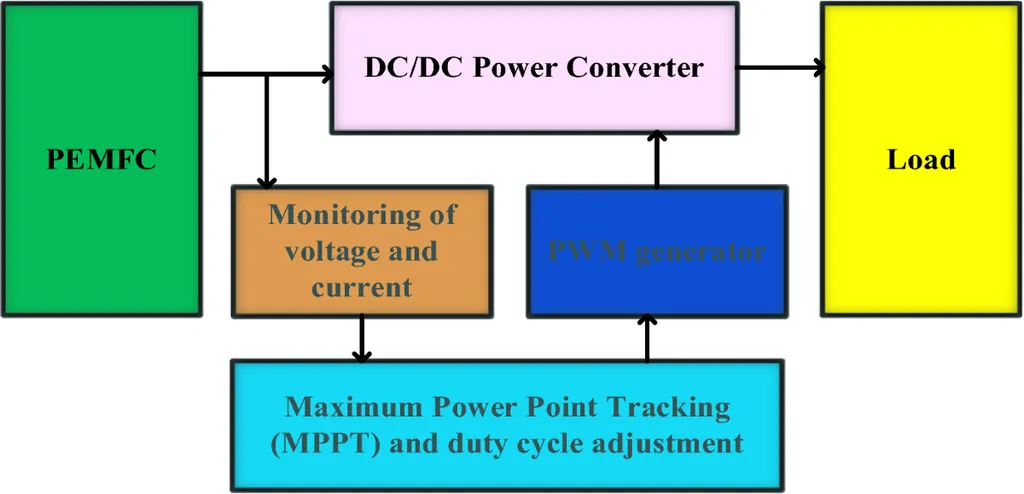In a significant stride towards enhancing the monitoring and maintenance of proton exchange membrane fuel cells (PEMFCs), a novel method for generating disturbance signals in AC impedance tests has been developed. This innovation, detailed in a recent paper published in *Control and Automation*, leverages the existing Boost circuit of fuel cell systems, eliminating the need for additional hardware. The research, led by SHEN Zehua, offers a promising approach to online health monitoring of PEMFCs, which are critical components in the energy sector.
PEMFCs are at the heart of many clean energy applications, from electric vehicles to stationary power generation. Their efficiency and longevity are paramount, but monitoring their health status in real-time has been a challenge. The AC impedance spectrum can provide a comprehensive overview of the cell’s parameters, including water, oxygen, and hydrogen content. However, traditional methods often require extra hardware, adding complexity and cost.
SHEN Zehua’s method superimposes an AC sine wave disturbance onto the output DC current using sinusoidal pulse width modulation (SPWM) within the existing Boost circuit. “By utilizing the main circuit of the fuel cell boost DC/DC converter, we can generate the necessary disturbance signals without additional hardware,” explains SHEN Zehua. This approach not only simplifies the system but also reduces costs, making it more attractive for commercial applications.
The research involves constructing a digital controller based on the input constant current PID control algorithm of the existing DC/DC loop. The physical prototype was tested and analyzed, with the generated signals used to measure AC voltage and current fluctuations on the DC/DC input side. This data was then used to test AC impedance and phase changes at various frequency points, ultimately drawing a corresponding AC impedance map.
To validate the effectiveness and accuracy of the proposed method, the researchers built a test bench for simulation tests based on the Randles equivalent circuit of PEMFCs and the electrical principles of the fuel cell power system. The comparative analysis of the test data confirmed the method’s reliability.
The implications of this research are far-reaching. For the energy sector, particularly in the realm of fuel cell technology, this method could revolutionize how PEMFCs are monitored and maintained. “This innovation could lead to more efficient and cost-effective health monitoring systems for PEMFCs, ultimately enhancing their performance and longevity,” says SHEN Zehua.
As the world continues to shift towards cleaner energy solutions, advancements like this are crucial. The ability to monitor PEMFCs in real-time could accelerate the adoption of fuel cell technology, making it a more viable option for various applications. The research published in *Control and Automation* marks a significant step forward, offering a practical and efficient solution for the energy sector.

